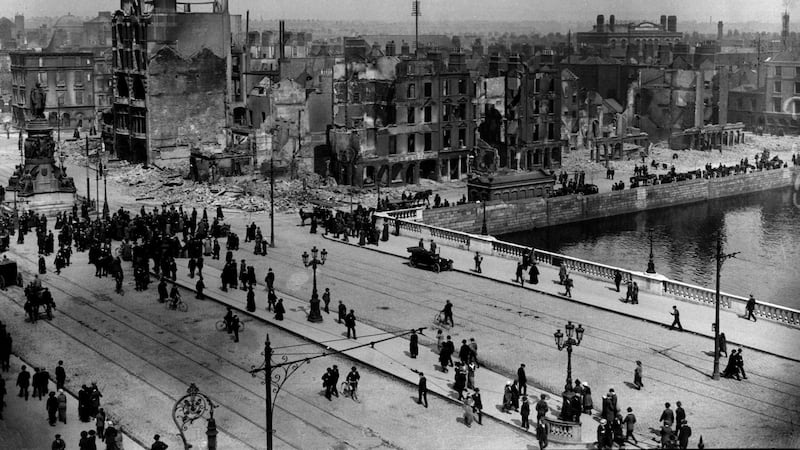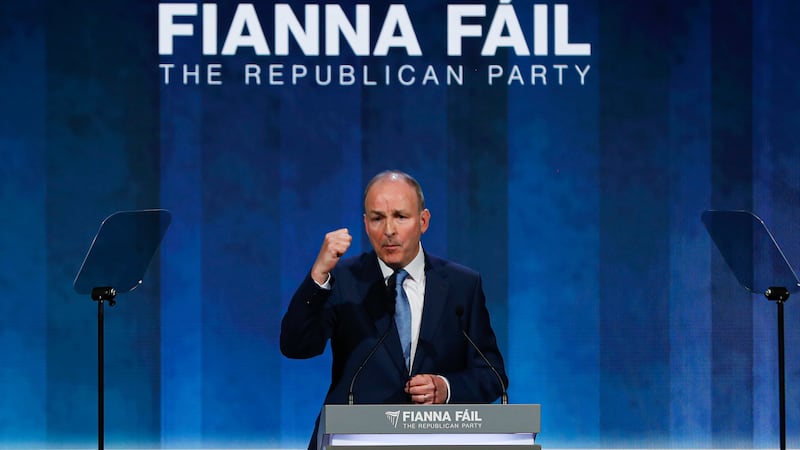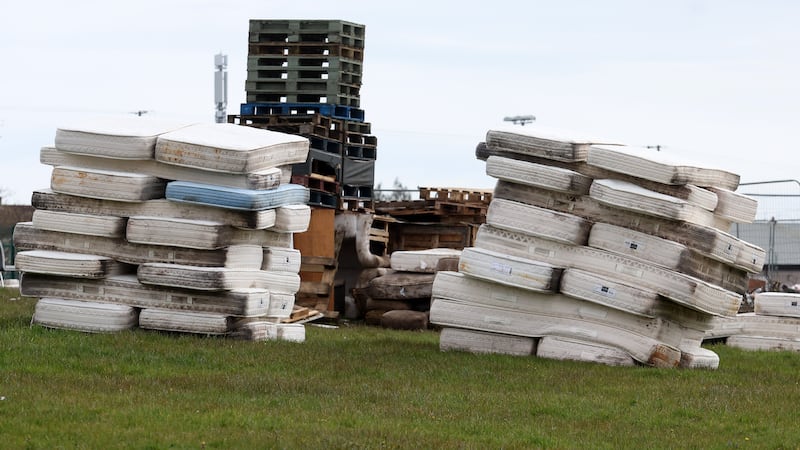“INSIDE the place was seething with activity – men were hurrying to and fro – messages were flying in and out; the noise of hammering came from the basement; there was much talk; bouts of laughter and over and over again the strains of a song I never heard before, ‘Soldiers are we, whose lives are pledged to Ireland, some have come from a land beyond the sea' ”.
That was the scene that greeted Elizabeth Corr, her sister Nell and Nora Connolly at 8am on Easter Monday morning 1916 in the ‘big room’ in Liberty Hall in Dublin hours before the start of the 1916 Rising.
In the ‘big room’ Elizabeth Corr observed and described the calm but excited demeanour of Pearse, Connolly, MacDonagh, and Madame Markievicz.
The song being sung was Amhrán na Bhfiann, The Soldiers' Song, Ireland’s national anthem.
No more appropriate group of balladeers to sing it than the ‘revolution making’ soldiers of the Irish Volunteers, Cumann na mBan and the Irish Citizen Army preparing for battle.
The Corr sisters, Winifred Carney and Nora Connolly, James Connolly’s daughter, were members of the Belfast branch of Cumann na mBan.
They were in Dublin to take part in the 1916 Rising, (which actually took place one hundred years ago on the 23rd of this month), and during it played a vital and life-threatening role as couriers to the Rising’s outpost commanders dotted around Dublin.
Elizabeth Corr was a prolific writer and recorder of historic events, which she and many other women helped create.
I read her eye witness account in an outstanding exhibition in Belfast’s Linenhall Library which documents the life of the Corr sisters and their involvement in the tumultuous events that gripped Ireland between 1914 and 1921. This unmissable exhibition is currently on in the library.
The exhibition, Clann Uí Chorra – An Stair ina Beo, (The Corr family – Witnessing History) was meticulously compiled by John Gormley and Gerard Rice from Belfast’s Ormeau Road with the active assistance of the May family who enthusiastically opened their treasure trove of historical documents for the exhibition.
Inside this one family, and their story, can be found the complexity of Irish history and the competing loyalties and allegiances of its people.
Elizabeth, Nell and their brother Henry participated in the 1916 Rising. Two other brothers, George and Charles fought in the First World War. George died close to the Somme and Charles was gassed and injured.
A variation of this familial complexity of history and competing allegiance graced the gathering in one of the grand rooms in Belfast City Hall at the Council’s civic dinner last week to mark the 1916 Rising.
This memorable occasion was replete with symbolism as the 1916 Rising was set in a national reconciliation frame for a mixed audience of nationalists, republicans and unionists.
The tone of the night was set by speeches from the city’s mayor Arder Carson and his Methodist chaplin, Rev Margaret Ferguson.
The mayor praised the cross-party council for its “new and fresh thinking” in holding the civic dinner which he said “created a new space” for the city’s history to be explored in a “less prejudiced way”.
The chaplin invoked God’s blessing on the night and asked, “that you would show us how to be true history makers.”
Republicans were, and could not but be impressed, with all aspects of the night. And the feedback from unionists who attended could be summed up in the comment from a significant figure who said as the night ended, “I’m not leaving here any less a unionist”. I think President Michael D Higgins might reflect on that remark.
Rediscovering connections to the 1916 Rising are a recurring by-product of the centenary celebrations. None more so than for Ireland’s Passionists.
Recently I attended a lecture at Tobar Mhuire in Crossgar on the direct connection between several leaders of the Rising and Dublin’s Mount Argus Monastery, the Order’s headquarters.
The Pearse family had a long association. Padraig and Willie frequented the monastery as did Joseph Plunkett, Eamonn Ceannt, Eamon de Valera and Cathal Brugha.
Fr Eugene Nevin, a Passionist priest, ministered to many of those involved in the fighting in what he described as “this never to be forgotten week”.
A week which still reverberates 100 years later.








